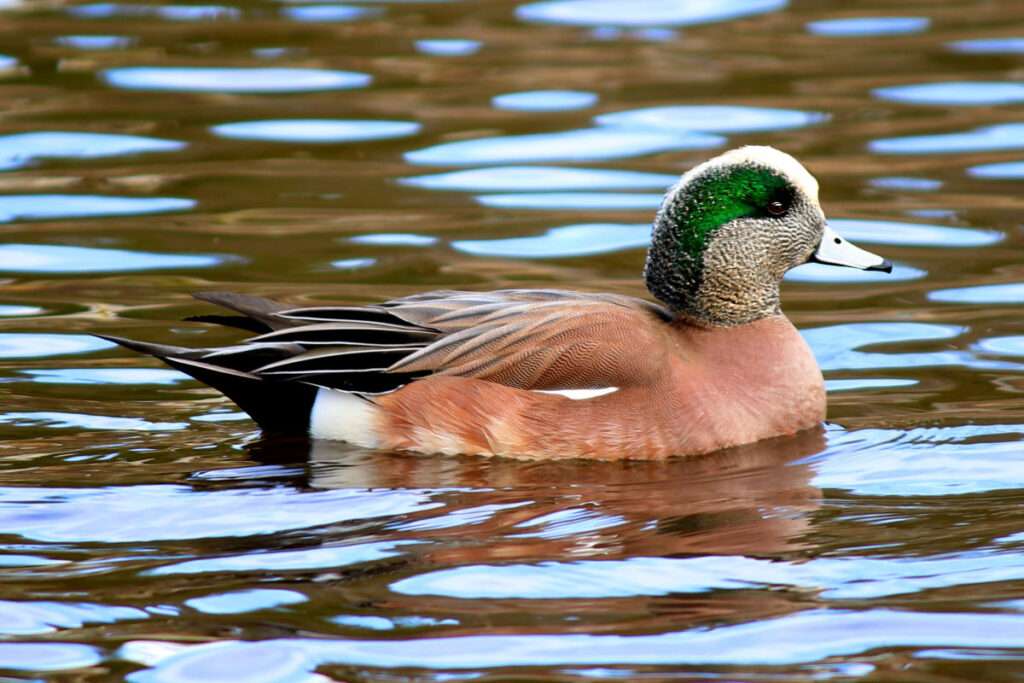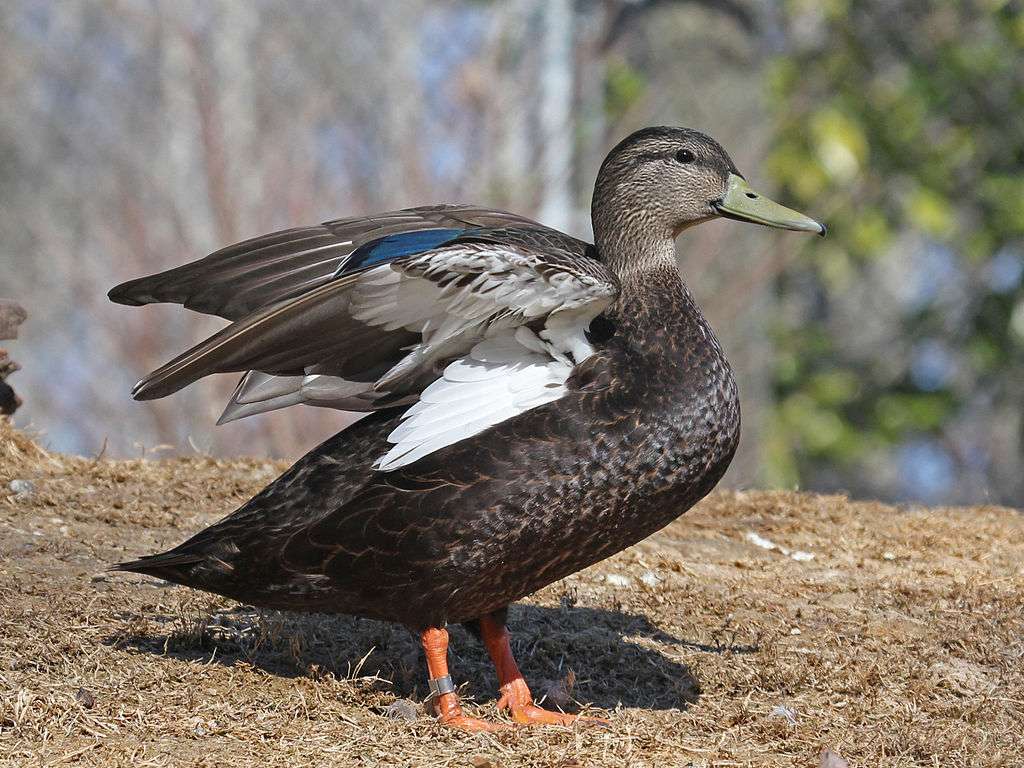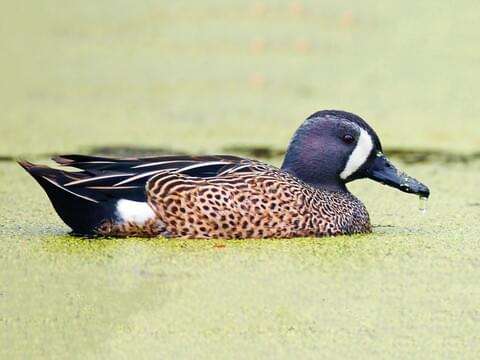
North American dabbling ducks include the American wigeon (Mareca americana), also referred to as the baldpate. This species, which was once categorized under Anas, is now included in the dabbling duck genus Mareca together with the other wigeons. It is the Eurasian wigeon’s New World equivalent.
Fun Facts
- According to reports, the oldest American Wigeon was at least 21 years and 4 months old. It was first filmed in Nebraska in 1973 after being filmed in Washington State in 1952.
- The white stripe on the American Wigeon gives it the nickname “baldpate” because it looks like a bald man’s head.
- Both successful males and unsuccessful females migrate north to huge lakes after breeding, where they spend around 35 days without flying while they grow new feathers before migrating south. Successful females and young birds remain in their breeding grounds to continue growing new feathers rather than migrating to molt.
Description
The bill is azure with a black tip and is shared by both sexes. Male American wigeons have an iridescent green band that extends from the eye to the rear of the head and a white patch that runs from the forehead to the center of the crown. They have a pinkish-brown breast and sides, with white flank feathers dividing them from the black under tail coverts. The white shoulder patch serves as a diagnostic while flying. Grey heads with brownish-black crowns, chests, and sides are the hallmarks of female American wigeons. Legs and feet have a dark to blue gray color.

Predators
The typical suspects are present when it comes to predators. When they can, foxes, raccoons, skunks, hawks, and crows steal eggs, catch ducklings, or occasionally nab adult birds. The American wigeon hen, however, is cunning; if she spots a predator coming, she will fly away stealthily and put on a distraction display to entice the predator away from her eggs or brood.
Diet
Mostly composed of plants. Consumes aquatic vegetation like eelgrass, wild celery, pondweed, sedges, and algae. Consumes some snails and insects as well. On land, it consumes seeds and leftover grains while grazing on young grass shoots. Young ducklings consume many insects.
Habitat
Lakes, bays, fields, and marshes. Primarily on inland marshes during the summer, particularly larger marshes; rarely at tiny ponds. On coastal estuaries, freshwater or saltwater marshes, inland lakes, and ponds during migration and the winter. On huge, deep lakes, it may snow.
As Pet
They are the fifth most often harvested ducks in the US. Most of this species still exists in the wild. Give them a pond with a natural setting and enough food to hunt through if you want to add them to the roster of pets. However, because they are noisy animals, their environment needs to be protected.
Table





